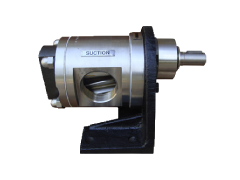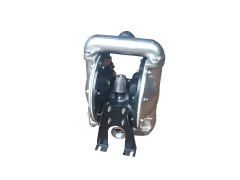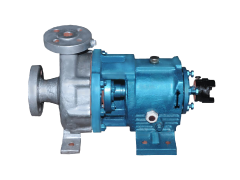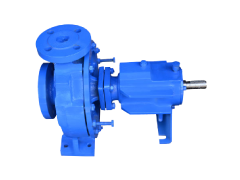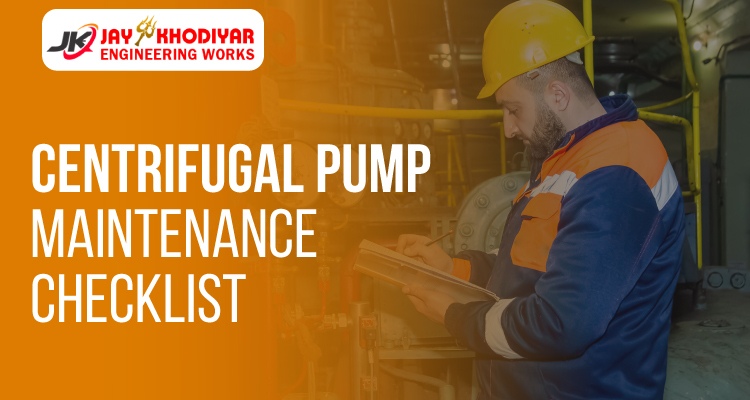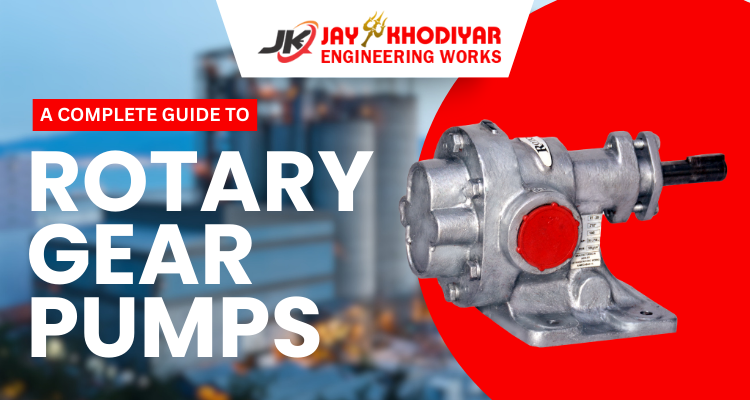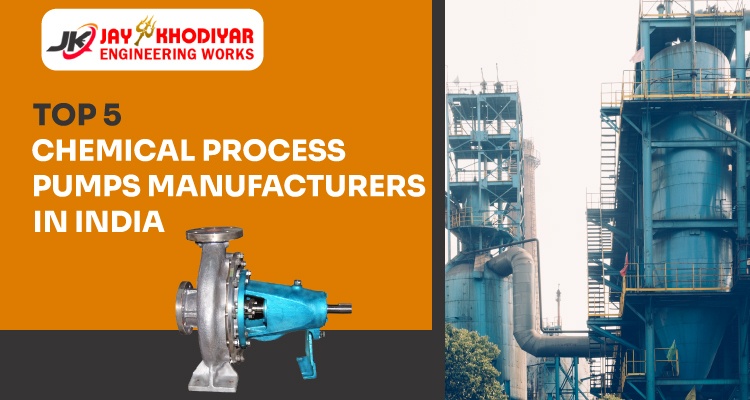
Top 5 Chemical Process Pumps Manufacturers in India
March 8, 2024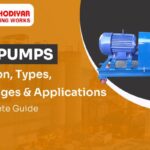
Mud Pumps: Definition, Types, Advantages and Applications – A Complete Guide
May 3, 2024Centrifugal pumps are essential in various industries, including water treatment and chemical processing.
However, neglecting regular pump maintenance can lead to costly downtime and safety hazards.
That's where pump care services come into play, as it not only ensure optimal performance but also extend the lifespan of your pumps, saving you time and money in the long run.
In this post, we’ve shared a complete centrifugal pump maintenance checklist to help prevent premature failure and extend the life of your pumping equipment.

Overview of Centrifugal Pumps
Before we talk about centrifugal pump maintenance, let's briefly understand centrifugal pumps and how they work.
centrifugal pumps, known for their versatility, use an impeller to increase fluid pressure and flow. These pumps are integral to systems requiring reliable fluid movement, such as water supply and chemical processing. The centrifugal pump impeller is a critical component, and its maintenance is crucial for the pump's overall performance.
These pumps are widely used for various applications, such as water supply systems, irrigation, chemical processing, and more. The performance of a centrifugal pump depends on several factors, including suction conditions, discharge requirements, and the properties of the fluid being pumped.
Understanding these factors can help you optimize your pump's operation and maintenance practices.
Pre-Maintenance Checks
Safety is paramount when performing maintenance on pumping equipment and services.
Before you begin maintenance, ensure a safe working environment by following proper lockout/tagout procedures and wearing the necessary personal protective equipment (PPE).
Next, gather all the tools and equipment you'll need for the job, such as wrenches, gauges, lubricants, and spare parts. It's also a good idea to consult the pump's maintenance manual is also recommended to familiarize yourself with specific centrifugal pump parts and maintenance procedures.
Visual Inspection
One of the first steps in your maintenance checklist should be a thorough visual inspection of the pump and its components.
Ideally, you should start by checking for any leaks around seals, gaskets, flanges, or other potential leak points. Leaks can not only cause fluid loss but also indicate underlying issues that need to be addressed. This involves checking for leaks, inspecting the centrifugal pump impeller for wear, and ensuring the motor and pump are correctly aligned.
Next, inspect the bearings for signs of wear or overheating, such as discoloration, excessive noise, or vibration. A bearing failure can lead to costly repairs and downtime, so catching issues early is crucial.
After that, don't forget to examine the impeller and casing for any signs of wear, erosion, or corrosion. These components are subject to constant wear and tear, and their condition can significantly impact the pump's performance and efficiency.
Finally, check the alignment between the pump and the motor. Misalignment can cause excessive vibration, premature bearing failure, and other issues, so it's essential to ensure proper alignment during your maintenance routine.
Lubrication
Proper lubrication is vital for the smooth operation of centrifugal pumps. It reduces friction and wear, prolonging the life of moving centrifugal pump parts.
If there's not enough lubrication or if the lubrication gets dirty, it can cause too much friction and rubbing between the moving parts. This leads to extra wear and tear, and eventually, the pump's components could break down completely.
Start by consulting the pump manufacturer's guidelines to determine the recommended types of lubricants for your specific pump model.
It’s important to note that different components, such as bearings and seals, may require different types of lubricants.
Next, follow the manufacturer's procedures for lubricating each component. This may involve adding fresh lubricant, replacing old lubricant, or simply checking and topping up existing levels.
It's also essential to maintain a lubrication schedule and keep accurate records. This will help you stay on top of lubrication requirements and identify any potential issues before they become significant problems.
Mechanical Seal Maintenance
The mechanical seals in centrifugal pumps are very important. Their job is to stop leaks and make sure the pumps work well and efficiently.
Over time, these seals can wear down or become damaged, leading to leaks and potential pump failure.
During your maintenance routine, inspect the mechanical seals for any signs of wear, such as cracks, chips, or excessive leakage. If you notice any issues, it's best to replace the seals following the manufacturer's guidelines.
When installing new seals, pay close attention to the recommended procedures. Improper installation can lead to premature seal failure and other issues, so it's essential to follow the manufacturer's instructions carefully.
Coupling and Shaft Alignment
As mentioned earlier, correct shaft alignment is critical to reducing wear and preventing premature failure of centrifugal pump parts.
Even slight misalignment can cause excessive vibration, increased wear, and premature bearing failure.
During your maintenance routine, check the alignment using methods recommended by the manufacturer, such as dial indicators or laser alignment tools. If you notice any misalignment, follow the appropriate procedures to realign the shafts accurately.
Vibration Analysis
Excessive vibration is a common issue in centrifugal pumps and can be an indication of various underlying problems, such as imbalance, misalignment, or bearing issues.
As part of your maintenance checklist, monitor vibration levels during pump operation. You can use handheld vibration meters or more advanced vibration analysis equipment, depending on the complexity of your system.
If you notice excessive vibration, investigate the root cause and take corrective action.
This may involve realigning components, replacing bearings, or addressing other issues contributing to the vibration.
Conclusion
Following a comprehensive centrifugal pump maintenance checklist is crucial for ensuring optimal performance, maximizing efficiency, and extending the lifespan of your equipment.
By regularly inspecting components, properly lubricating, monitoring vibration, and addressing any issues promptly, you can minimize downtime and costly repairs.
Remember, every pump and application is unique, so it's essential to consult the manufacturer's guidelines and industry experts for specific maintenance recommendations tailored to your needs.
Companies like Jay Khodiyar Pumps specialize in pump care services and pump maintenance and can provide expert guidance and support, ensuring your pumping equipment remains in top condition. They are a leading manufacturer of high-quality centrifugal pumps, known for their durability, efficiency, and reliable performance.
With a wide range of pump models and customization options, Jay Khodiyar Pumps can cater to various industrial applications and specific requirements.







